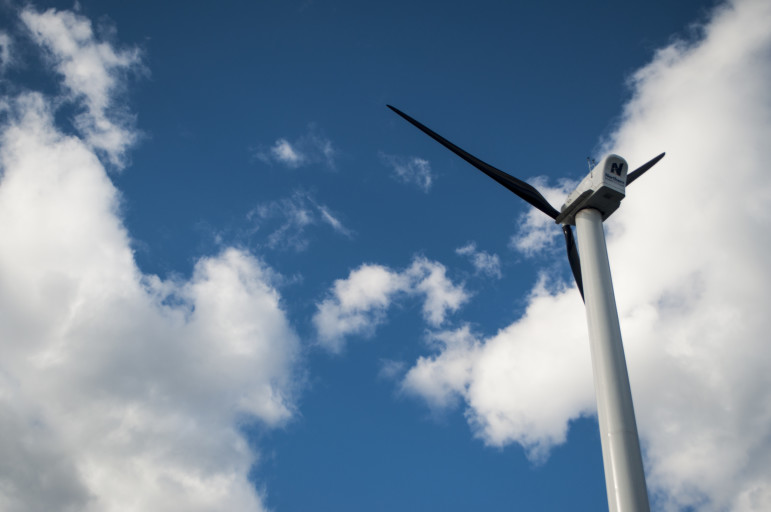
Rejaaa
Wind turbines at the Sunset Park Material Recovery Facility.
New York is on the verge of one of the biggest health breakthroughs of this century. It’s not a new weight loss pill or fad diet. It’s the Clean Power Plan – a groundbreaking program from the U.S. Environmental Protection Agency to rein in the carbon pollution spewing from America’s biggest source – our power plants. In fact, the Clean Power Plan is the single largest step the U.S. has taken to curb the pollution causing global warming, which the medical journal The Lancet has called a “global medical emergency.”
We’re not used to thinking about global warming as a health crisis. But as greater numbers of professionals in the field learn more about the issue – about the spread of disease, rising temperatures, mass trauma from increasingly extreme weather – it’s becoming increasingly clear that we should. Warming temperatures mean that insect-borne diseases have a greater range – showing up in new places, where doctors and nurses have little experience dealing with them.
Good health means strong communities, basic services, and support networks. These can be absolutely devastated by extreme weather events such as superstorms like Sandy, or floods that have been occurring with greater frequency and severity due to warmer, wetter air.
The cure for global warming is well known. We know the pollution that’s fueling global warming is coming from fossil fuels like coal, gas, and oil. We know that we have the potential to harness enough pollution free wind, solar, geothermal and other renewable energy resources to power all of our homes, businesses, factories and even our cars and trucks.
Of course we can’t achieve this vision overnight. But we can – and we must – take steps now that put us closer to a trajectory to solve this problem for future generations. That’s where the Clean Power Plan comes in. The Clean Power Plan, announced by the Obama administration in August, aims to lower emissions from the country’s power plants by 32 percent below 2005 levels by 2030. Here in New York, Governor Andrew Cuomo has pledged to cut emissions economy-wide by 40 percent below 1990 levels by 2030 – demonstrating to the world what is possible.
Along the way, not only are we taking a necessary step to stave off future warming and a more dangerous, less healthy world for future generations – the Clean Power Plan is delivering real health benefits now. That’s because when we reduce carbon pollution from power plants, we’re also reducing soot, smog, and other harmful pollutants that are responsible for respiratory illness and even premature deaths. EPA estimates that the Clean Power Plan will save as many as 6,600 lives and prevent up to 150,000 asthma attacks each year.
The Clean Power Plan is good for our health, achievable, and relies upon proven technologies. Yet the oil, coal, and gas polluters and their allies in Congress are waging an intense battle against it. U.S. Senator Mitch McConnell has vowed to do everything in his power as majority leader to block or delay the plan. And because his powers only go so far, he and his fossil fuel allies have turned to governors, attorneys general, and polluters from across the country to join a comprehensive assault on the plan.
On Tuesday, the Senate voted to block the Clean Power Plan. The House is likely to do the same when they take up the measure. There’s also an ongoing legal battle, with New York Attorney General Schneiderman leading the charge to support climate action.
As the opposition campaign ramps up in Congress, in the courts, and in the states, federal and state leaders should support EPA’s Clean Power Plan, and work quickly to shift our country from fossil fuel power to clean energy. For the sake of our health, our kids’ health, and future generations, we can’t afford to wait to tackle global warming.
Heather Leibowitz, Esq. is the Director of Environment New York, a statewide environmental advocacy organization.








